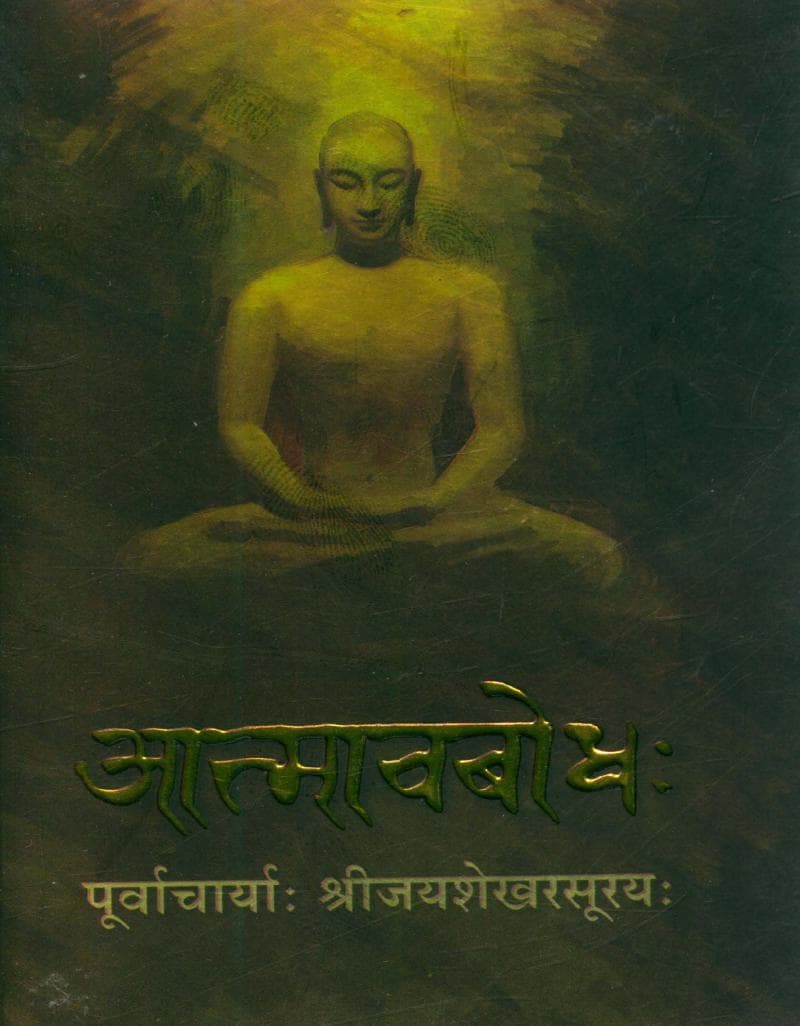Aatmavbodh
Added to library: September 1, 2025

Summary
While I cannot access external websites directly, including the catalog link you provided, I can offer a comprehensive summary of what a Jain text titled "Aatmavbodh" by Kalyanbodhisuri, published by Jinshasan Aradhana Trust, is likely to contain, based on the typical themes and structure of Jain spiritual literature.
"Aatmavbodh" (आत्मबोध) directly translates to "Self-Knowledge" or "Knowledge of the Self." This title strongly indicates that the text is focused on the core Jain concept of the soul (Ātmā) and the path to realizing its true nature, free from worldly attachments and karmic impurities. Kalyanbodhisuri, as an author of spiritual texts, would likely be guiding the reader towards this ultimate spiritual goal.
Here's a comprehensive summary of what "Aatmavbodh" by Kalyanbodhisuri is likely to cover:
Overall Objective:
The primary objective of "Aatmavbodh" would be to impart knowledge and understanding of the true nature of the soul (Ātmā) and to provide a practical guide for achieving liberation (Moksha) through self-realization and the practice of Jain principles. It aims to awaken the reader from their spiritual slumber and illuminate the path to eternal bliss.
Key Themes and Content (Anticipated):
-
The Nature of the Ātmā (Soul):
- Essence of the Soul: The text would likely begin by defining the Ātmā as an eternal, uncreated, conscious, and blissful entity, intrinsically pure and perfect.
- Inherent Qualities: It would detail the soul's innate qualities of infinite knowledge (Anant Gyan), infinite perception (Anant Darshan), infinite bliss (Anant Sukh), and infinite energy (Anant Virya), which are currently obscured by karma.
- Distinction from the Body and Matter: A significant portion would be dedicated to differentiating the Ātmā from the physical body, senses, mind, and all other non-soul (Ajiva) substances. This is crucial for dispelling identification with the material world.
-
The Problem of Bondage (Bandha):
- Causes of Bondage: The text would explain how the soul becomes entangled in the cycle of birth and death (Samsara) due to its association with karma.
- The Role of Karma: It would delve into the nature of karmas (Pudgalas that adhere to the soul), their various types (e.g., Gyanavarniya, Darshanavarniya, Vedniya, Mohaniya, Ayushya, Nam, Gotra, Antaraya), and how they obscure the soul's true qualities.
- The Influence of Passions (Kashayas): The text would highlight the role of anger (Krodha), pride (Mana), deceit (Maya), and greed (Lobha) as the primary drivers of karmic influx.
- The Sense of "Mine" and "I" (Moha): It would discuss how attachment, aversion, and delusion (Moha) create a false sense of self and lead to continued suffering.
-
The Path to Liberation (Moksha Marga):
- The Three Jewels (Tattva Traya): The text would elaborate on the fundamental principles of Right Faith (Samyak Darshan), Right Knowledge (Samyak Gyan), and Right Conduct (Samyak Charitra) as the essential pillars of the path to liberation.
- Samyak Darshan: Understanding and accepting the fundamental truths of Jainism, especially the nature of the soul, the bondage, and liberation. This involves eradicating ignorance and delusion.
- Samyak Gyan: Acquiring correct and comprehensive knowledge of the soul, the universe, and the principles of karma. This would likely involve studying scriptures and reflecting deeply.
- Samyak Charitra: Practicing ethical conduct, vows (Vrata), and austerities (Tapa) to purify the soul and prevent further karmic accumulation.
- The Five Great Vows (Maha-Vratas): The text would likely detail the ethical guidelines for ascetics (monks and nuns) and their lay followers:
- Non-violence (Ahimsa)
- Truthfulness (Satya)
- Non-stealing (Asteya)
- Celibacy/Chastity (Brahmacharya)
- Non-possession/Non-attachment (Aparigraha)
- Austerities (Tapa): The importance of various forms of austerity (fasting, self-discipline, meditation) in burning off accumulated karma would be emphasized.
- Mindfulness and Meditation (Dhyana): The text would likely guide the reader on cultivating mindfulness and engaging in meditation practices to gain inner stillness and self-awareness.
- The Three Jewels (Tattva Traya): The text would elaborate on the fundamental principles of Right Faith (Samyak Darshan), Right Knowledge (Samyak Gyan), and Right Conduct (Samyak Charitra) as the essential pillars of the path to liberation.
-
Practical Guidance and Encouragement:
- Discrimination (Viveka): The ability to distinguish between the self and the non-self would be a recurring theme.
- Detachment (Vairagya): Cultivating dispassion towards worldly pleasures and possessions.
- Self-Effort (Purushartha): The crucial role of personal endeavor in achieving spiritual progress.
- Overcoming Obstacles: Addressing common challenges and distractions on the spiritual path.
- Inspiration: The author would likely use devotional verses, parables, or examples from the lives of saints and omniscient beings (Siddhas) to inspire the reader.
Structure (Likely):
A text like "Aatmavbodh" would typically follow a logical progression:
- Introduction: Setting the stage, highlighting the importance of self-knowledge.
- Definition and Nature of the Soul: Establishing the foundation of understanding.
- The Cycle of Suffering and Karma: Explaining the problem and its causes.
- The Path to Liberation: Detailing the principles and practices.
- Ethical Conduct and Vows: Providing a framework for daily spiritual life.
- Meditation and Inner Practices: Guiding the reader toward inner transformation.
- Conclusion: Reinforcing the message and offering blessings or encouragement.
In essence, "Aatmavbodh" by Kalyanbodhisuri would be a treatise aimed at awakening the soul's inherent knowledge, guiding the practitioner through the stages of spiritual purification, and ultimately leading them to the realization of their true, liberated self, free from the bondage of karma and the cycle of rebirth. It would serve as both an intellectual guide and a practical manual for spiritual aspirants within the Jain tradition.